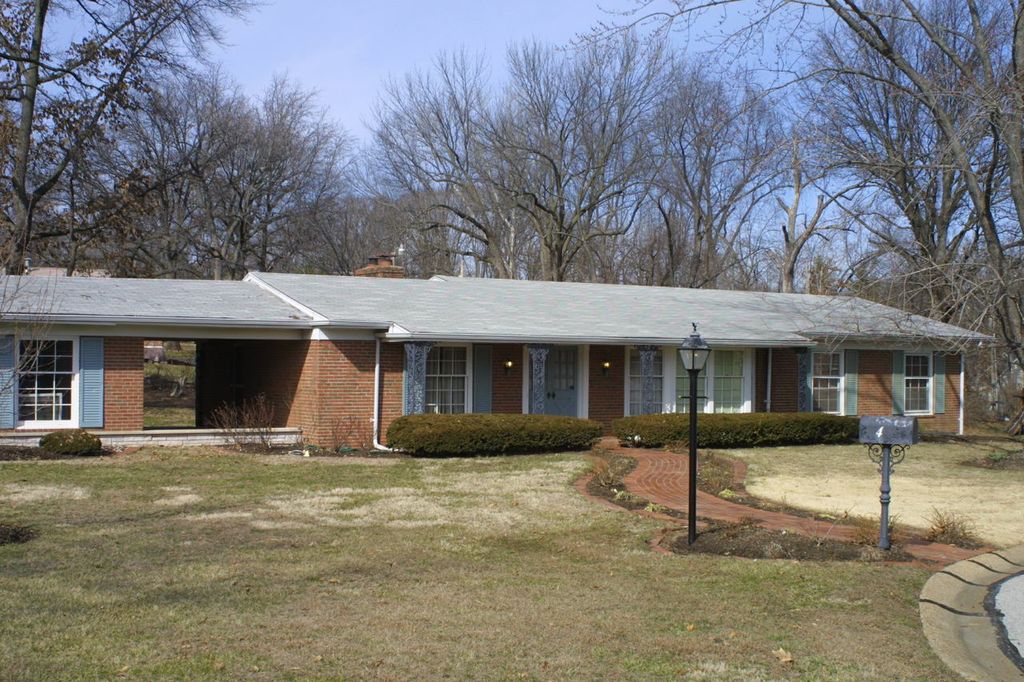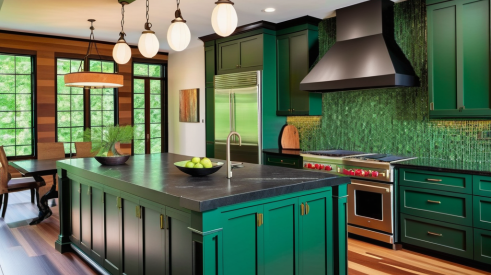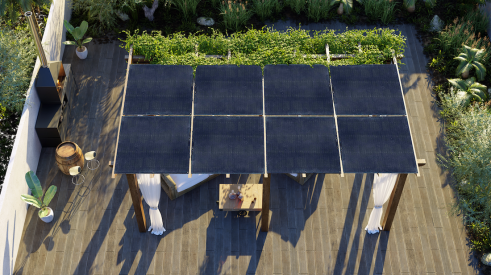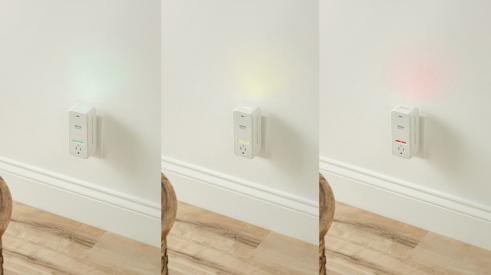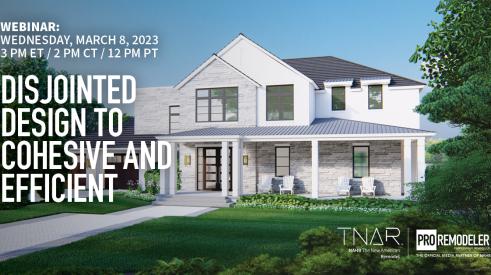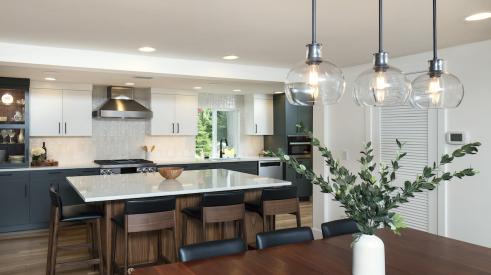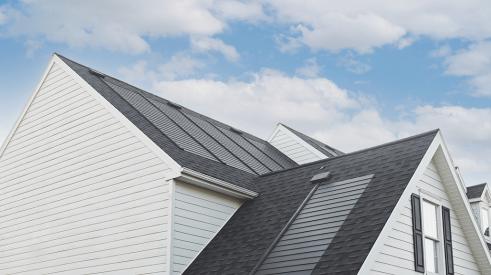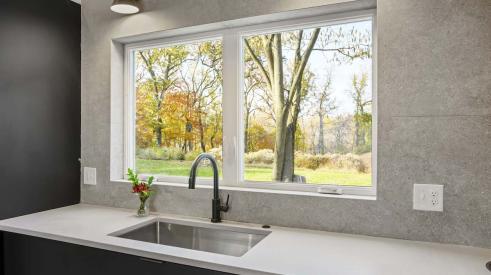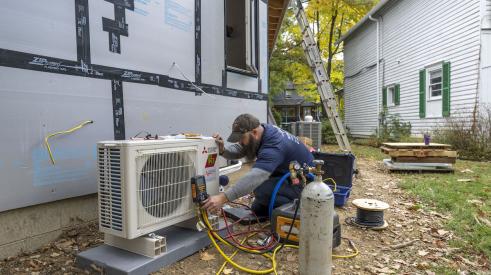As you drove by, No. 4 Sleepy Hollow was nothing special, just one of 1,000 similar homes in the St. Louis suburbs. But an opportunity to upgrade the house while preserving a family’s legacy was indeed special for the homeowner and Hibbs Homes.
“We took it from the past 60 years and will be able to give it another 100 years of life,” says Kim Hibbs, project manager for Hibbs Homes, Chesterfield, Mo.
Located in an area with thriving schools, the neighborhood is attracting younger families. The ranch-style home was originally built in 1956 with a full basement, breezeway, and attached garage. The new homeowners wanted to do many renovations after purchasing the home.
Structurally, the home was well built. It is a full masonry home with 6-inch concrete block and a 4-inch exterior brick veneer. The home’s frame roof was well ventilated, so attention could be turned to larger problem areas that could provide the homeowners a quicker return on their investment, such as replacing the single-pane windows and creating a good air seal.
As the first step of the reconstruction process, Hibbs Homes and sustainable construction consultant Verdatek Solutions conducted an energy assessment to identify performance priorities that fell within the owner’s budget. The energy assessment began with an initial blower door test and inspection, which confirmed the exterior walls contained almost no insulation. As for the insulation in the attic, the homeowners wanted to remove the existing roof and add a second story complete with HVAC equipment.
After the environmental assessments and prior demolition were complete, the Habitat for Humanities’ Restore crew came through and took most of the windows, doors, trim, appliances, cabinetry, and even the 80-percent efficient furnace and air conditioner that had been recently replaced. Not only did these materials stay out of the landfill, but Habitat Restore also got some revenue-producing items, and the client received a tax benefit from the donation.
The home was then ready for demolition and reconstruction. Verdatek Solutions used the National Green Building Standard (ANSI ICC-700) and the NAHBGreen online checklist as the guiding documents for the reconstruction project.
Some of the goals of the project included:
Keep the same footprint but double the 1,200 square feet of living space by building up—creating three additional bedrooms (for a total of six) and two additional bathrooms (for a total of five).
Create better thermal performance by managing moisture transfer through the existing masonry walls. In addition, using attic-style trusses left 9.5 inches for insulation and ventilation that we filled with closed cell foam.
Add natural light by relocating the stairwell to the center of the home and adding small frosted skylights to light the hallway at the rear of the house.
Make the home energy efficient and durable with good indoor air quality. The 4-ton 80-percent HVAC system was removed and a 4-ton geothermal system with thermostatically controlled dampers was installed. We All ducts and HVAC equipment were moved inside to the conditioned attic space. In addition, Energy Star fans and lighting with LED and compact fluorescent bulbs were installed. All materials and finishes had low or no VOCs. An upgraded filter system and glass door with gasket for the existing masonry fireplace were installed.
Improve the site by managing storm water, improving grading, and establishing native vegetation.
Install a new 7.88 Kw solar PV system.
Lessons Learned
Quality management is key to any project but especially in dealing with various products and how they will perform in the future. Performance testing before and after is critical to measure goals and establish performance.
An open house for industry professionals and the general public demonstrated what could be done with homes of this era. Facts posted around the house explained different features, upgrades, and general information.
When dealing with renovating a home, there are always unforeseen challenges. In a building this old, a number of issues that were not necessarily issues from the original construction were encountered. In fact, the quality and durability of the original structure made it possible to rehab this home instead of demolishing it.
The original builder and masons certainly did not have the equipment that is available to construction industry now, but they did a fine job building a good, stout home.
I would hope in 100 years or so someone will think that way about what we did. PR
The energy assessment began with an initial blower door test and inspection, which confirmed the exterior walls contained almost no insulation. As for the insulation in the attic, the homeowners wanted to remove the existing roof and add a second story complete with HVAC equipment.
Add new comment
Related Stories
Working Toward Affordable, Resilient Homes
A new natural disaster protection act from NAHB aims to support hazard mitigation projects
Client Design Choices in the Time of Social Media and AI
Social media speeds up the trend cycles, and now artificially created images are falling into homeowners' hands
Indoor Air Quality Gets Smart
A home's air quality can now be cloud connected and fully automated with this innovative product
Webinar: From Disjointed Design to Cohesive and Efficient—The New American Remodel 2023
Access the recording for the first The New American Remodel webinar held on March 8 at 2 pm CT
5 Standout Energy-Efficient Products Spotted at IBS 2023
See what this green remodeler recommends from the show floor
Innovative Products: GAF Energy Timberline Solar Shingles
GAF Energy’s latest innovation has taken the solar world by storm
Detailed Design: Benefits of Biophilism
See the details our Model ReModel contractors chose to infuse nature into their ADU
Heat Pumps Now Required in Washington New Construction
Washington is the second state to require heat pumps in an effort to electrify homes



